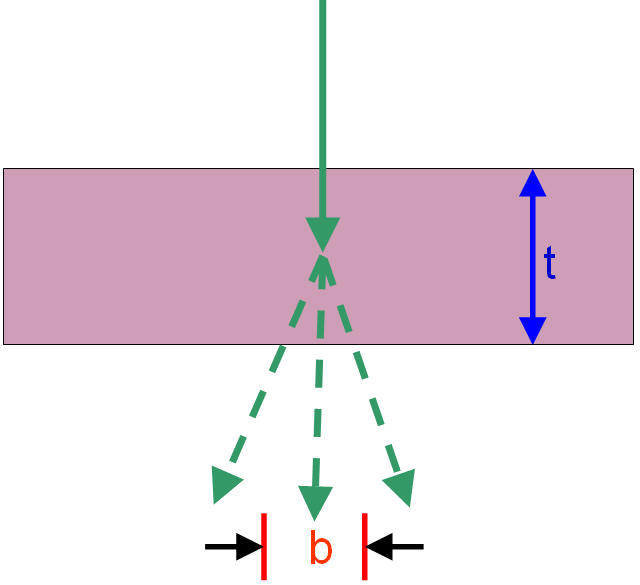|
This book (Practical Electron Microscopy and Database) is a reference for TEM and SEM students, operators, engineers, technicians, managers, and researchers.
|
=================================================================================
The first model of beam broadening in a thin film was developed by Reed [1], who assumed that a single, Rutherford scattering event occurred at the centre of the foil, and in X-ray measurements he defined the broadened size of X-ray source as that volume in which 90% of the electron trajectories lay as shown in Figure 3773. Electron beam broadening in a thin film, e.g. a TEM or STEM specimen, can be calculated by the “single-scattering” model that assumes each electron is only scattered once when traveling through the very thin specimen. In this case, the thin specimens act as weak phase objects so that the extent of beam broadening (b) can be given by,
 --------------------------- [3773] --------------------------- [3773]
Where Z - The atomic number
E0 -- The incident beam energy (in keV)
ρ -- The atomic density (g/cm3)
A -- The atomic weight
t -- The thickness (in cm)

Figure 3773. First model of beam broadening in a thin film.
This model was applied in X-ray measurements. Adapted from [1].
[1] Goldstein, J. I., Costley, J. L., Lorimer, G. W., and Reed,
S. J. B. (1977) SEM 1977 (O. Johari, ed.) Pub. 11RT1,
Chicago, 315.
|
 --------------------------- [3773]
--------------------------- [3773] 